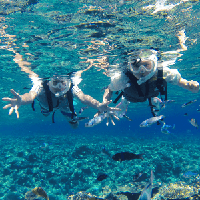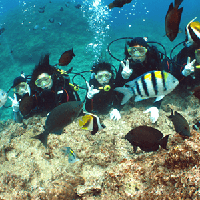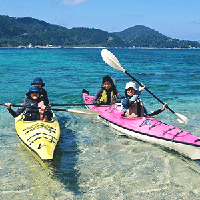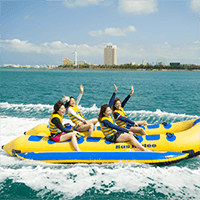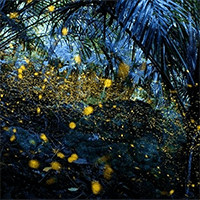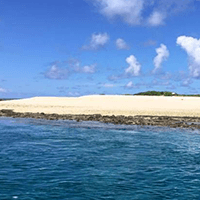Hyogo in Vocational experience
- Age 20~Age 99
- 3~4 hours
- 13:00
Nadagogo, Japan's number one sake brewery, is a mecca for sake lovers, where you can enjoy free tours and tastings of more than 10 sake breweries. Sake breweries gather along the Hanshin Railway lines, and the roads are flat, making it perfect for walking around town.If you come to Kansai, please try it once. Sake made from high-quality sake rice (Yamada Nishiki) suitable for sake brewing and high-quality underground water rich in minerals. This is a tour around Nada, which has prospered as a famous sake production area since the Edo period because of its port.・A walking tour of Japan's No. 1 sake brewery, Nada Sake Brewery・Please try this tour where you can learn trivia, history, manufacturing process and more.・10 free tastings included, so be careful not to drink too much.
- Age 20~Age 80
- 3~4 hours
- 10:00
A tour of Nada Gogo Sake Breweries. We will have you experience tasting the highly recommended Ginjo sake from Hamafuku Tsuru Ginjo Workshop, Kiku-Masamune Sake Brewery Memorial Museum, and Kobe Shushinkan. Includes paid tasting. Enjoy a blissful time surrounded by the aroma of Ginjo. Lastly, enjoy an authentic nigiri sushi lunch at Nada-ya, which is famous in Kobe and only known to those in the know. Now comes with a small bottle of cute ochoko and ginjo sake.
- Age 10~Age 100
- 4~5 hours
First, you will observe the making of a Japanese sword (forging) for about an hour. After that, you will create a small knife under the guidance of a swordsmith who has inherited the art of making Japanese swords. The "Small Knife Making Experience" has been running for over 10 years. During that time, hundreds of people have tried it, and we have improved it to give you a better experience of blacksmithing. Everyone is worried, thinking "It looks difficult" or "Can I do it?" but don't worry. I'll be there with you. I'll fully support you! Experience the excitement of seeing your first small knife completed!
- Age 0~Age 100
- 1~2 hours
- 09:00 / 10:00 / 11:00 / 13:00 / 14:00 / 15:00 / 16:00
Awaji tiles have been around for 400 years since the Edo period. As one of the three major tile production areas in Japan, tiles are still being manufactured there. The craftsmen who make onigawara and decorative tiles by hand are called "onishi", and it is a valuable experience to be able to see the craftsmanship of the onishi, who know the soil. Awaji tiles have been around for 400 years since the Edo period. As one of the three major tile production areas in Japan, tiles are still being manufactured there. The craftsmen who make onigawara and decorative tiles by hand, which are indispensable for temples and shrines, are called "onishi", and their numbers are decreasing, with only about 10 on the entire island of Awaji (about 50 nationwide). Tatsumi Co., Ltd., which you will visit on this plan, has five onigawara. The factory tour is a private plan limited to one group per time. With the guidance of the potter's president, Okitsu Yusuke, you will observe the tile manufacturing process and the techniques used by the onigawara craftsmen to make the onigawara tiles. You will also be able to talk to the onigawara craftsmen, who will be happy to answer any questions you may have. Afterwards, in the exhibition area, valuable pieces made during the Azuchi-Momoyama period are on display, giving you a glimpse into the evolution of this traditional craft that has continued for 400 years. Another attraction is that all the onigawara craftsmen's works from the Azuchi-Momoyama period to the present day are on display in one place. After the experience, you will be given a souvenir aromatic tile to choose from and can take home with you. Below is the experience schedule. You will be guided through the tour as follows: 1. Manufacturing site 2. Onigawara craftsmen at work 3. Onigawara collection (exhibition area)
- Age 0~Age 100
- 1~2 hours
- 13:00
Have fun learning about tea in a tea-producing area that has been around since the Heian period! You can enter the beautiful tea fields, take photos of yourself as a tea girl, tour the factory, and brew delicious tea in a teapot, all of which can be enjoyed by people of all ages. In May, July, and September, you can also choose to pick tea leaves as an option. You can take the tea leaves home with you, and children's costumes are also available for the popular tea girl experience! Parent-child participation is also recommended. You can access the area by renting a bicycle from JR Sasayamaguchi Station. It takes about 12 minutes to get there while admiring the beautiful tea fields.
- Age 5~Age 100
- 1~2 hours
- 09:00 / 10:00 / 13:00 / 14:00 / 15:00
Description and factory tour of the tile, is a plan that can actually look at the craftsmanship up close at the factory.
- Age 6~Age 100
- 2~3 hours
- 10:00
Wild red sea bream caught at Maruyama Fishing Port, overlooking the Onaruto Bridge, is famous as a representative sea bream of Awaji Island, and has a history of being presented to the Emperor in four eras from the Taisho era to the Reiwa era. Two generations of fishermen who know the Naruto Strait inside and out will guide you while fishing for wild red sea bream in a fishing ground with an excellent location overlooking the Onaruto Bridge. Board a fishing boat with a fisherman who knows the fishing ground inside and set off to fish for wild red sea bream! Instead of relying on a fish finder, they look at the direction of the mountains and cast their nets. This fishing method, called Gochiami fishing, is said to be difficult to catch unless you are an experienced fisherman, as the net is cast at a pinpoint while identifying the tide. This fishing method involves creating an encircling shape with an oval net and tugs tied to both ends, which narrows the net to intimidate and drive the fish into the net, where they are caught by getting entangled in the mesh. While catching fish, the fishermen will demonstrate and explain how to "release the air" from the swim bladders, which are inflated by the difference in water pressure, to keep the fish fresh, and the different types of fish. Usually, fishing by casting and pulling the net is done several times a day, but on this tour, you will only see it once or twice. After that, they will return to port and land the fish. You can see up close the craftsmanship of reading the tides and casting the net to the right spot without waste. You can also purchase the fish caught on the day of the experience. ■Experience Schedule10:00 Gathering (This may change depending on the tides on the day. In that case, the Awaji Island Tourism Association will contact you.)10:05 Preliminary explanation (about Achi net fishing and safety precautions)10:15 Depart from Maruyama Fishing Port (Depart for fishing experience)11:15 Return to Maruyama Fishing Port11:20 Return to port, landing of fish, sorting12:00 Scheduled end
- Age 20~Age 100
- 4~5 hours /5~6 hours
- 09:50
The Hyogo/Harima region is blessed with rich nature and is rich in ingredients made from beautiful water. This tour will include a tour of the production of "Ibonoito" hand-stretched somen, a specialty product unique to this region with a history of over 600 years, and a visit to "Oimatsu Sake Brewery", a sake brewery in Shiso, which is said to be the birthplace of Japanese sake. You can enjoy lunch and experience Japanese food culture at the dining room.
- Age 6~Age 100
- 1~2 hours
- 10:30
Visit the Yura Fisheries Cooperative Association's unique fish auction with a professional fisherman and broker who also supplies fish to famous fish markets such as Toyosu Market, high-end restaurants, and Michelin-starred restaurants. Experience the lively fishing town of Yura Port, a natural harbor with the largest variety of fish landed on Awaji Island. Yura Port is located in the exact center of the eastern side of Awaji Island. With the Kitan Strait stretching out before it and a wide fishing ground stretching from Osaka Bay to the Pacific Ocean, Yura Port is known as a natural harbor, and in addition to high-end fish such as sea bream and conger eel, about 150 types of fresh seafood are landed each season. This time, you will sneak into the Yura Fisheries Cooperative Association auction, which is usually only open to those involved, together with a professional fisherman who also supplies fish to markets and high-end restaurants nationwide. This is a valuable private tour experience that is held once a day and is limited to a maximum of four people. You can watch the auction right next to the fishermen, have them guide you around the fishing port, and enjoy the atmosphere of the local fishing town, with the people working energetically at Yura Port. [Yura Fisheries Cooperative Association auction] The fishermen themselves line up crates of fish one after another on a wooden platform. The fishermen instantly select the fish, quickly write the purchase price in chalk on palm-sized rectangular plates, and throw them one after another into a designated box-like area, where the person inside the box wins the bid to the highest bidder. This is a unique system of the Yura Fisheries Cooperative Association. It only takes a few tens of seconds, but you can see the tension and speed of the professional scene with your own eyes. This process is repeated over and over, and once again the fish are selected, the price is decided, and the bill is thrown in. During this time, fresh fish are brought in one after another from the boats docked at the port. This auction continues for about an hour. In the past, on days with a large catch, the auction would continue until the evening. ■Schedule10:30 Meet at Yura Fishing Port (Market) (Meet Awajishima Suisan Yamaguchi, a professional fisherman)10:35 Take a tour of Yura Fisheries Cooperative Association with Yamaguchi, a professional fishermanFirst, he shows us one fresh fish after another caught in the waters off Awaji Island, such as sea bream, flounder, horse mackerel, hairtail, octopus, abalone, and turban shells, before they are shipped to markets at high prices. After listening to an explanation of the unique auction method of Yura Fisheries Cooperative Association, we move to the auction site. The auction finally begins.11:30 Visit to Yura Fisheries Cooperative Association auction (Go to the auction site with Yamaguchi, a professional fisherman)Professional fisherman Yamaguchi will participate in the auction. Everyone can observe the auction up close. (Please observe within the designated area.) 12:00 Auction observation ends and the auction disbands. (Yamaguchi is currently participating in the auction. We apologize for not being able to see you off properly. Please be careful on your way home.)
- Age 5~Age 100
- Within 1 hour
- 11:00
Approximately 70% of domestic incense sticks are manufactured on Awaji Island. Among them, the Ei district is where many manufacturers gather, and you can smell the delicious aroma of incense as you walk through the town. It has even been selected as one of the "100 Scented Landscapes" by the Ministry of the Environment. This is a valuable experience where you can visit an incense manufacturer that has been manufacturing incense since 1905 and still maintains traditional handmade manufacturing methods, learn about the history of Awaji Island incense sticks, knowledge of fragrance, and the manufacturing process from a fragrance master called a "Koshi", and experience part of the manufacturing process while receiving a lecture from a veteran craftsman. After learning the basics of incense from a fragrance master called a "Koshi" at an incense manufacturer on Awaji Island, which accounts for approximately 70% of the domestic incense market, you will receive a lecture from a veteran craftsman and experience part of the actual manufacturing process. It is a valuable opportunity to listen to the craftsman's story! *The experience will involve cutting the sticks into bonkiri (a bonkiri stick) and putting them raw on the sticks.
- Age 5~Age 100
- 1~2 hours
- 11:00
Approximately 70% of domestic incense sticks are produced on Awaji Island. Among them, the Ei district is where many manufacturers gather, and you can smell the delicious aroma of incense as you walk through the town. It has even been selected as one of the "100 Scented Landscapes" by the Ministry of the Environment. Visit an incense manufacturer that has been producing incense since 1905 and continues to produce it by hand, learning about the history of Awaji Island incense sticks, knowledge of fragrance, and the manufacturing process from a fragrance master called a "Koshi", and experiencing making your own original incense. After learning the basics of incense by visiting a manufacturer of incense sticks on Awaji Island, which accounts for approximately 70% of domestic incense sticks, and learning about the history and knowledge of fragrance of Awaji Island incense sticks, as well as the traditional manufacturing process, it's time to make your own incense! Choose the color of the incense, put the ingredients and water in a mortar and knead. Blend your favorite fragrances and knead again, then use a die to shape the incense. Take it home and let it dry thoroughly for about a week, and your incense is ready! You can experience making your own scent at home. [Experience Schedule] 11:00 Meeting Observe the traditional incense manufacturing process at Awaji Umekundo Ei Factory (30 minutes) 11:30 Learn about the history of incense and fragrance knowledge from a Kohshi (producer) and experience making incense (80 minutes) 12:50 Scheduled to end
- Age 5~Age 100
- 1~2 hours
- 11:00
Approximately 70% of domestic incense sticks are produced on Awaji Island. Among them, the Ei district is where many manufacturers gather, and you can smell the delicious aroma of incense as you walk through the town. It has even been selected as one of the "100 Scented Landscapes" by the Ministry of the Environment. Visit an incense manufacturer that has been producing incense since 1905 and continues to produce it the traditional way, learning about the history of Awaji Island incense sticks, knowledge of fragrance, and the manufacturing process from a fragrance master called a "Koshi", and experiencing making your own original sachet. After learning the basics of incense by visiting an incense manufacturer on Awaji Island, which accounts for approximately 70% of the domestic incense market, and learning about the history of Awaji Island incense stick production, knowledge of fragrance, and the traditional manufacturing process, you can finally experience making an incense sachet. You can mix your favorite fragrance ingredients and make an original sachet to put in your favorite sachet, and enjoy the scent at home. [Experience Schedule] 11:00 Meeting point Observe the traditional incense manufacturing process at Awaji Baikondo Ei Factory 11:30 Learn about the history and scents of incense from a Kohshi (producer) and experience making a scented sachet (50 minutes) 12:20 Scheduled end
- Age 6~Age 100
- 2~3 hours
- 10:00
Fish caught in the Nada area, south of Awaji Island, are eaten in sushi restaurants in Tokyo. You can board a fishing boat with a veteran fisherman who makes a living from fixed net fishing. He usually landes his catch at 15 locations a day, but on this tour you will visit one of them. It is a valuable experience to learn how fixed net fishing works, the secret of the deliciousness of the fish caught here, and the hardships they endured. You can also purchase the fish caught that day. You can board a fishing boat with the fisherman and observe fixed net fishing up close. When you arrive at the fishing ground where the fixed net is set, the fisherman will pull up the net called a box net with the fish caught in it. He uses a machine halfway, but at the end he pulls up the heavy rope by hand. Normally he does this work at 15 locations a day. After a while, you can hear trivia such as how to distinguish between male and female fish and the species of fish caught that day, the secret of their deliciousness, and the hardships they endured. Apparently, some of the requests are quite unusual, coming from affiliated aquariums who say, "If you catch this fish, please let us know!" After that, the fish return to port and are lifted into the tanks at the landing area. This is hard work, but it's a cool sight to see the fishermen smoothly unloading the catch. After the experience, you can also purchase the fish that were landed that day and go home. ■Experience Schedule10:00 Meet up (This may change depending on the tides on the day. In that case, the Awaji Island Tourism Association will contact you.)10:05 Preliminary briefing (about fixed net fishing and safety precautions)10:15 Depart from Nada Fishing Port (Depart for fishing experience)11:15 Return to Nada Fishing Port11:20 Landing and sorting of fish12:00 Scheduled end
- Age 10~Age 100
- 4~5 hours
First, you will observe the making of a Japanese sword (forging) for about an hour. After that, you will create a small knife under the guidance of a swordsmith who has inherited the art of making Japanese swords. The "Small Knife Making Experience" has been running for over 10 years. During that time, hundreds of people have tried it, and we have improved it to give you a better experience of blacksmithing. Everyone is worried, thinking "It looks difficult" or "Can I do it?" but don't worry. I'll be there with you. I'll fully support you! Experience the excitement of seeing your first small knife completed!
- Age 20~Age 99
- 3~4 hours
- 13:00
A visit to a sake brewery is a must on any trip to the Kansai region of Japan. Nada Ward in Kobe City is the place with the largest production of sake in Japan, and there are about 30 sake breweries in the area called "Nada Gogo", which stretches 24km from east to west. The history of sake brewing dates back to around 1330. Speaking of "Nada's sake", it is so famous that it appears in classic rakugo, and Nada is blessed with various conditions suitable for sake brewing. Mineral-rich hard water called "Miyamizu", the production area of "Yamada Nishiki", which is famous as "the king of sake rice", and "Rokko Oroshi" blowing down from Mt. Rokko bring a cold and optimal climate. This tour will take you to 3 carefully selected locations and sample over 25 different types of sake. A guide who is familiar with sake and the Nada area will guide you to the profound world of sake. ~ Flow of the day ~ 13:00 Meet in front of the ticket gate of Ishiyagawa Station (Hanshin Line) 13:30 1st place Sake brewery With a history of over 250 years, it is the smallest sake brewery in Nada Ward, and the production volume is 1.8 bottles ( 1.8L) It is a small scale of about 40,000 bottles. Although the scale is small, there are well-known high-quality brands that are known all over Japan. You will be able to taste mainly unpasteurized sake (liquor with live yeast) that can only be enjoyed in Japan. This yuzu sake is the best! *We are not open on Saturdays and Sundays, so we will take you to another sake brewery. note that. 14:00 2nd place Sake brewery Founded in 1751, the president is the 13th generation brewery. There are a wide variety of authentic sake, including "Junmai Ginjo", which has been served at the Nobel Prize banquet five times in the past. The souvenir corner has a wide variety of snacks, sake bottles, masu, and more. Tasting with an explanation from the brewer is always very popular with tourists! 15:00 3rd Place Sake Brewery This is the biggest sake brewery in Japan. There is a museum that exhibits the traditional construction methods. Wear a happi coat and take a memorable photo at a commemorative photo spot. 15:30 4th place In Sakagura Nada Ward, it's a small sake brewery, but a sake master with over 60 years of experience will serve you sake. While making traditional, high-quality sake, it is also innovative and rich in variety. For example, there are whiskeys that have been aged in American oak for 14 years, sherry that has been aged in brandy barrels for 14 years, and sake that is a blend of white wine Chardonnay and sake. The image of Japanese sake will be overturned. This is optional, and there is a paid tasting counter. You can enjoy a small plate of cheese made from dairy cows raised on Mt. Rokko and the finest Shizukuzake. 16:30 Leave Uozaki Station (Hanshin Line)
- Age 6~Age 100
- 2~3 hours
- 09:00 / 10:00 / 11:00 / 13:00 / 14:00 / 15:00
"Circular agriculture", a traditional agricultural system that has been practiced in Minami Awaji City for over 100 years and is certified as a Japanese agricultural heritage, is an advanced production circulation system unique to Awaji Island that combines rice, onions, and cattle breeding. This is an SDGs experience tour where you can visit spots that are full of the characteristics of this region, such as onion huts, long-house gates, and reservoirs, and experience the secret of the deliciousness of onions through an actual onion harvesting experience. "Circular agriculture", a traditional agricultural system that has been practiced in Minami Awaji City for over 100 years, is a production circulation system unique to Awaji Island that combines rice, onions, and cattle breeding, and was certified as a Japanese agricultural heritage in 2020. In order to make effective use of limited farmland, rice and onions are grown alternately in the same place as "double cropping", but if this is repeated, the soil will eventually lose nutrients. That's where cow manure becomes a miracle cure. The rice straw produced by rice cultivation becomes cow feed and creates nutritious cow manure. This mutual support with the livestock industry keeps the farmland fertile and produces delicious, sweet onions. On this tour, you can actually harvest the delicious onions grown under this system while interacting with local residents. Afterwards, you will have the chance to try tasting sliced onions with onion dressing to really experience the sweetness of the onions you harvested! In addition, an official guide from Minami Awaji City will take you to spots packed with the characteristics of the region, such as the "nagayamon" house structure used by livestock farmers that supports this "recycling agriculture," the "onion hut" that was designed as a drying facility suited to the climate of Awaji Island, and the "irrigation ponds" that are the most densely populated in Japan as a solution to the water shortage that has long been a problem on the island. Make the most of what you can use, and continue to produce good things without waste. Experience the prototype of the SDGs that has been around for over 100 years. Experience Schedule Schedule Example (for a 10:00 start) 10:00 Meet at the parking lot (next to Oji Shrine, Kasumigo, Minami Awaji City) 10:00-10:40 Explanation of the Japanese Agricultural Heritage "Recycling Agriculture", tour of the surrounding area (visit the onion shed and cowshed while enjoying the scenery surrounded by nature) 10:40-11:20 Explanation of Awaji Island onions, onion harvesting experience 11:20-12:00 Tasting of freshly harvested onions (sliced or steamed whole), freshly squeezed milk ice cream
- Age 6~Age 100
- 2~3 hours
- 09:00 / 10:00 / 11:00 / 13:00 / 14:00 / 15:00
"Circular agriculture", a traditional agricultural system that has been practiced in Minami Awaji City for over 100 years and is certified as a Japanese agricultural heritage, is an advanced production circulation system unique to Awaji Island that combines rice, onions, and cattle breeding. This is an SDGs experience tour where you can visit spots that are full of the characteristics of this region, such as onion huts, long-house gates, and reservoirs, and experience the secret of the deliciousness of onions through an actual onion harvesting experience. "Circular agriculture", a traditional agricultural system that has been practiced in Minami Awaji City for over 100 years, is a production circulation system unique to Awaji Island that combines rice, onions, and cattle breeding, and was certified as a Japanese agricultural heritage in 2020. In order to make effective use of limited farmland, rice and onions are grown alternately in the same place as "double cropping", but if this is repeated, the soil will eventually lose nutrients. That's where cow manure becomes a miracle cure. The rice straw produced by rice cultivation becomes cow feed and creates nutritious cow manure. This mutual support with the livestock industry keeps the farmland fertile and produces delicious, sweet onions. On this tour, you can actually harvest the delicious onions grown under this system while interacting with local residents. Afterwards, you will have the chance to try tasting sliced onions with onion dressing to really experience the sweetness of the onions you harvested! In addition, an official guide from Minami Awaji City will take you to spots packed with the characteristics of the region, such as the "nagayamon" house structure used by livestock farmers that supports this "recycling agriculture," the "onion hut" that was designed as a drying facility suited to the climate of Awaji Island, and the "irrigation ponds" that are the most densely populated in Japan as a solution to the water shortage that has long been a problem on the island. Make the most of what you can use, and continue to produce good things without waste. Experience the prototype of the SDGs that has been around for over 100 years. Experience Schedule Schedule Example (for a 10:00 start) 10:00 Meet at the parking lot (next to Oji Shrine, Kasumigo, Minami Awaji City) 10:00-10:40 Explanation of the Japanese Agricultural Heritage "Recycling Agriculture", tour of the surrounding area (visit the onion shed and cowshed while enjoying the scenery surrounded by nature) 10:40-11:20 Explanation of Awaji Island onions, onion harvesting experience 11:20-12:00 Tasting of freshly harvested onions (sliced or steamed whole), freshly squeezed milk ice cream, and onion chiffon cake
- Age 6~Age 100
- Within 1 hour
- 10:00 / 14:00
Awajishima is known for its sweet and soft onions. We will learn the secrets of their deliciousness from Awajishima Hamada Farm, which grows onions in the Mihara Plain, the most prosperous area for onions production, and then we will head out to harvest! You can take home a bag of harvested onions as a souvenir. This is an experience where you can learn about why Awajishima onions are so delicious, and enjoy Awajishima onions even after you return home. Awajishima is a representative onion producing area in Japan. You can experience harvesting on an onion farm. The famous owner of Awajishima Hamada Farm, Tetchan, will teach you the secrets of Awajishima onions' deliciousness, and if you wish, you can even experience biting into an onion. After completing the preliminary preparations, you will finally enter the field and harvest the onions. You can take the harvested onions home as a souvenir. You can enjoy the soft and delicious Awajishima onions even after you return home. Experience Schedule Meet at the Awajishima Hamada Farm parking lot (20 spaces), then guide to the onion field. Explanation of the characteristics of Awajishima onions and harvesting methods (20 minutes). Head to the onion field! Harvest a net full of onions (20 minutes). End on site.
最近チェックしたプラン
Please wait a moment
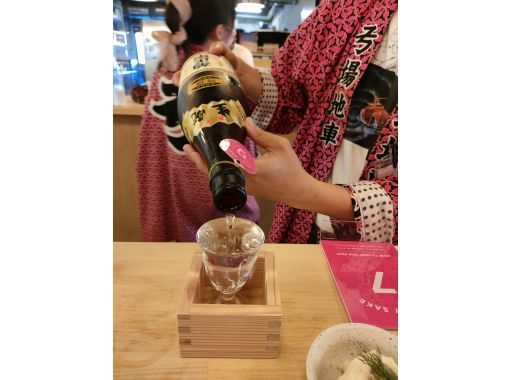
![[Hyogo/Kobe] Sake brewery tour in Nada Gogo, tasting of Ginjo sake, and high-quality sushi lunch includedの画像](https://img.activityjapan.com/10/52236/10000005223601_WPzK1xI6_3.jpeg?version=1702609325)
![[Hyogo, Aioi] Experience making a small knife and observe the making of a Japanese sword (forging)の画像](https://img.activityjapan.com/10/57224/10000005722401_ntZ3nnUe_3.jpg?version=1744950484)
![[Hyogo, Minami Awaji] 400 years of history! Japan's three major tile production areas: Onigawara craftsmen on Awaji Island: Experience the craftsmanship of Onishi up close and see the manufacturing process! Awaji tile kiln tour experienceの画像](https://img.activityjapan.com/10/58514/10000005851401_1Gz5AIDf_3.webp?version=1743490147)
![[Hyogo, Tamba Sasayama] Learn about tea in a fun way at Japan's oldest tea place!の画像](https://img.activityjapan.com/10/57279/10000005727901_ntZ3nnUe_3.jpg?version=1735187222)
![[Hyogo/ Himeji] Clay craft challenged by Onishi ’s guidance “Clay craft experience” and craftsmanship can be seen at the Factory tour!の画像](https://img.activityjapan.com/10/11797/10000001179701_CBBDv0Ku_3.jpg?version=1571203024)
![[Hyogo, Minami Awaji] Not giving in to the fast currents of the Naruto Strait. Dedicated to sea bream! A private tour of Maruyama Fishing Port, where wild sea bream has been presented to the Emperor, with a second generation fishermanの画像](https://img.activityjapan.com/10/58745/10000005874501_1Gz5AIDf_3.webp?version=1744604346)
![[Hyogo, Harima] Harima's soul food "Hand-pulled somen noodles "Ibonoito"" factory tour & Japanese food culture experienceの画像](https://img.activityjapan.com/10/53745/10000005374501_lpXgdgDW_3.webp?version=1712885467)
![[Hyogo, Sumoto] A professional fish broker who wholesales fish to Toyosu Market and famous high-end restaurants will explain while auctioning! A variety of high-end fish! Experience the lively auction at the Yura Fisheries Cooperative!の画像](https://img.activityjapan.com/10/58638/10000005863801_1Gz5AIDf_3.webp?version=1744252207)
![[Awaji, Hyogo] Learn from active craftsmen of a manufacturer that preserves traditional handmade manufacturing, and experience some of the processes involved in making incense, a traditional industry on Awaji Island, in a town of incense that has continued since the Edo period.の画像](https://img.activityjapan.com/10/58861/10000005886101_nXyAW2Zv_3.webp?version=1745205481)
![[Awaji, Hyogo] Learn about the history and basics of fragrance from a fragrance master in this town of incense that has been around since the Edo period, and create your own original incense by choosing the scent and shape.の画像](https://img.activityjapan.com/10/58859/10000005885901_nXyAW2Zv_3.png?version=1745203267)
![[Hyogo/Awaji] Learn all about fragrances and then make your favorite scented sachet at an incense manufacturer that preserves traditional handmade manufacturing.の画像](https://img.activityjapan.com/10/58819/10000005881901_nXyAW2Zv_3.png?version=1744872913)
![[Hyogo, Minami Awaji] Listen to veteran fishermen! A private tour to see the spectacular work of fixed net fishing, where a variety of fish species are caught.の画像](https://img.activityjapan.com/10/58746/10000005874601_1Gz5AIDf_3.webp?version=1744605665)
![[Hyogo, Aioi] Experience making a small steel sword and observe the making of a Japanese sword (forging)の画像](https://img.activityjapan.com/10/57225/10000005722501_tUytNN5L_3.JPG?version=1744950544)

![[Hyogo, Minami Awaji] Fresh onions and milk ice cream tasting included! Learn the secrets of onion production using the traditional "recycling agriculture" system with this agricultural heritage tour and onion harvesting experienceの画像](https://img.activityjapan.com/10/58637/10000005863701_1Gz5AIDf_3.png?version=1744251663)
![[Hyogo, Minami Awaji] Agricultural heritage tour to learn the secrets of onion production by "recycling agriculture" with fresh onions, onion chiffon cake, and milk ice cream tasting & onion harvesting experienceの画像](https://img.activityjapan.com/10/58613/10000005861301_1Gz5AIDf_3.png?version=1744251422)
![[Hyogo, Minami Awaji] The Hamada family will welcome you! Experience harvesting Awaji Island onions while touching the soil and listening to stories about the secrets of their deliciousness and agriculture in a relaxing atmosphere.の画像](https://img.activityjapan.com/10/58509/10000005850901_1Gz5AIDf_3.webp?version=1743489068)
